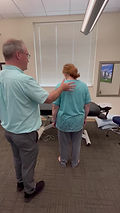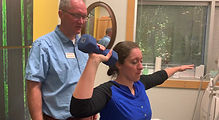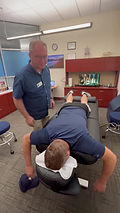Fax #: 801-377-3697


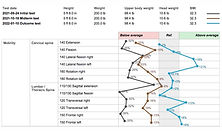
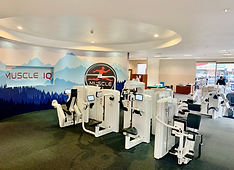
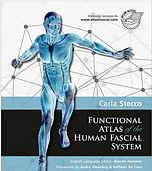
Journal of Muscle IQ
Journal of Muscle IQ - Volume 6
April of 2025
Journal of Muscle IQ - Volume 6 - April of 2025
Author: Christopher P. Knudsen, DPT
This is a Proposal (NOT FINISHED) for a RESEARCH PAPER:
Title: Muscle Weakness vs. Muscle Inhibition - A Novel Method for Clinical Differentiation in Neuromuscular Assessment
Key words: Muscle Strength, Muscle Inhibition, Physical Therapy, Manual Therapy, Pain Modulation.
Abstract:
Muscle inhibition is often conflated with muscle weakness, complicating clinical assessment and treatment. When painful stimuli from muscle tissue activate nociceptors, the resulting afferent inputs trigger a cascade of physiological changes that ultimately suppress Motor Cortex activity. This inhibition underlies the muscle weakness observed in most outpatient orthopedic muscle pain conditions. Currently there are no standardized tests that measure for muscle inhibition specifically. Studies have shown that Light Touch (non-painful stimuli)
This study will investigate the novel concept of Light Touch (LT) combined with Manual Muscle Testing (MMT) as an assessment tool to determine the presence of muscle inhibition.
Forty participants (aged 18-85) with low back pain underwent 3 trials of MMT. Test 1 - MMT of sidelying hip abduction. Test 2 - MMT of sidelying hip abduction with simultaneous LT to the subject's pain spot. Test 3 - MMT of sidelying hip abduction without LT. Results showed LT had a significant immediate temporary effect on MMT scores (+1.3) for 85% of participants.
Introduction
In physical therapy, the clinical distinction between muscle weakness and neuromuscular inhibition remains poorly defined, complicating both assessment and treatment planning. Muscle weakness, widely recognized as a reduction in force production stemming from structural deficits such as atrophy or fiber loss, is a familiar concept in rehabilitation (Clark & Manini, 2008). Neuromuscular inhibition, less frequently discussed in clinical settings, involves a reduced ability to activate intact muscle tissue, often associated with pain or altered neural signaling (Rice & McNair, 2010). Despite their differing origins—structural limitation versus a potentially reversible neural process—no standardized criteria exist to differentiate them in clinical practice. In fact, Manual Muscle Testing, the most widely used assessment for measuring muscle response in patients, has not had a viable competitor in nearly a century. MMT of its own accord does not presume to differentiate between muscle weakness and muscle inhibition. This lack of clarity extends to intervention, where approaches like resistance training or manual therapy are applied without tailoring to the underlying mechanism of decreased muscle function, potentially undermining patient outcomes. The authors believe it is time to identify better tools for assessment and treatment of muscle inhibition to help clinicians provide a more patient-centered plan of care.
Contemporary pain science highlights pain as a complex experience, shaped by peripheral input, central processing, and contextual factors, rather than a simple stimulus-response event (Moseley & Butler, 2015). Pain’s role in neuromuscular inhibition is well-acknowledged, with evidence linking it to suppressed motor output, as seen in conditions like arthrogenic inhibition following joint injury (Palmieri-Smith, 2009). However, emerging perspectives suggest that pain’s influence may not be confined to the affected muscle. Limb pain, for example, might contribute to a broader inhibition pattern, potentially involving the deep muscles of the spine. Knee pain and low back pain. Hand pain and neck pain. These segmental connections, while not yet standard, resonate with modern views of pain as a networked phenomenon, influencing multiple tissues and systems. This possibility challenges clinicians to look beyond isolated deficits and consider wider neuromuscular interactions.
Current interventions, such as manual therapy and tactile stimulation, are valued for reducing pain and improving function (Bialosky et al., 2018), yet their specific effects on inhibition—distinct from weakness—remain underexplored. This study introduces novel hypotheses and methods to address these uncertainties, grounded in accepted principles of pain and motor control. We propose that limb pain and paraspinal responses may be segmentally linked, amplifying inhibition across related neural levels, and test whether light tactile input and soft tissue manipulation can differentially modulate this process, with effects potentially persisting beyond immediate application. These ideas extend current knowledge without relying on outdated mechanistic models, offering a fresh lens on how pain shapes neuromuscular function. By examining these possibilities, this study seeks to provide initial evidence for distinguishing inhibition from weakness and refining treatment approaches, addressing a critical need in a field where diagnostic precision and individualized care remain elusive.

